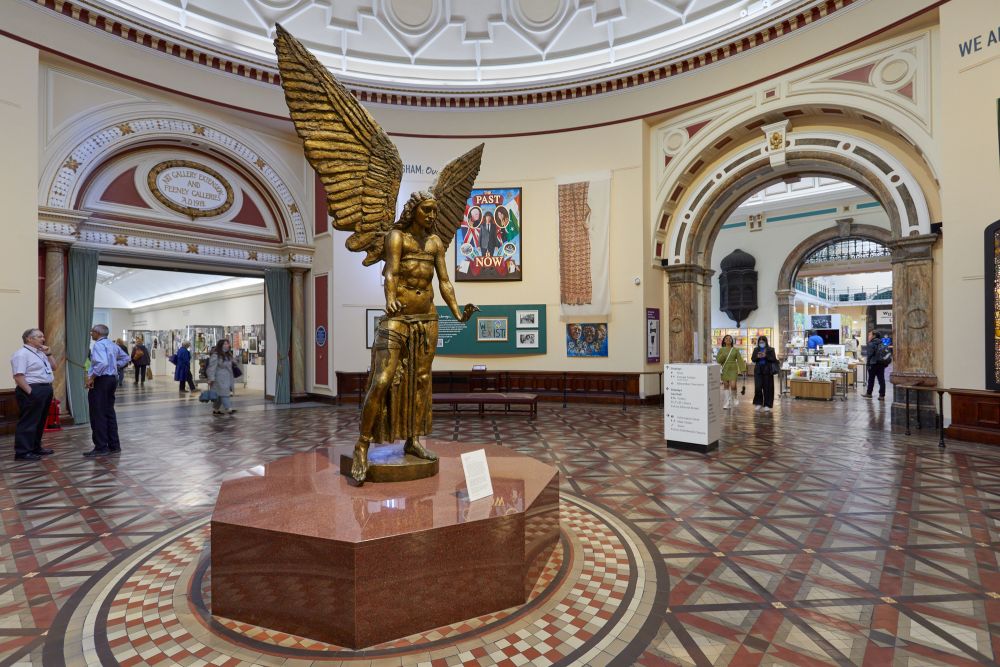

The Birmingham Museum and Art Gallery (BMAG) has been a central feature in Birmingham’s cultural landscape since its establishment in 1885. Its tourism history is marked by the expansion of its collections, buildings, and its role in representing the artistic heritage of the city and beyond.
Initially, it was designed to bring art and culture to the citizens of Birmingham, showcasing works from the Pre-Raphaelites as well as historical artifacts. The museum opened to the public on November 28, 1885, and it was quickly recognized as a place of educational significance.
During the twentieth century, the museum expanded its collection and audience reach. After surviving damage from bombing in World War II, BMAG re-emerged as a beacon of cultural resilience. The post-war era saw a boom in local and international tourism, with the museum becoming an increasingly popular destination for visitors seeking to engage with art and history.
In the latter half of the twentieth century, the museum continued to grow, adding numerous exhibits that chronicled both local and world history. Highlights include the extensive Pinto Collection of wooden artifacts and an impressive selection of Renaissance art. The museum also houses one of the most important collections of Pre-Raphaelite paintings in the world.
In recent years, BMAG has embraced new trends in the tourism industry. Interactive exhibits and a strong presence on social media have helped the museum stay relevant in the digital age. Additionally, BMAG has become part of the broader tourism trend towards experiential activities, providing workshops, talks, and live performances to enhance the visitor experience.
Birmingham Museum and Art Gallery is also aligning with the global move towards sustainable tourism. They are actively working to reduce their carbon footprint and promote conservation through their operations, contributing to a more responsible form of travel.
The COVID-19 pandemic brought significant challenges to the tourism sector worldwide, and BMAG was no exception. It responded by enhancing its online offerings, including virtual tours and digital exhibits, allowing visitors to enjoy the museum from the comfort of their homes.
As Birmingham continues to evolve as a vibrant, modern city, the BMAG remains a steadfast reflection of its historical and cultural fabric. It stands as a testament to the city's commitment to the arts, education, and community engagement and continues to attract tourists from all over the world.
For those planning a visit, BMAG is located in the city center, easily accessible by public transportation. Admission is free, although certain special exhibitions may require a ticket. Opening hours and visitor info are regularly updated on the museum's official website, making it easy for tourists to plan their visit.
With its rich history and adaptation to modern tourism trends, Birmingham Museum and Art Gallery continues to be a must-see destination for any visitors to Birmingham, United Kingdom.